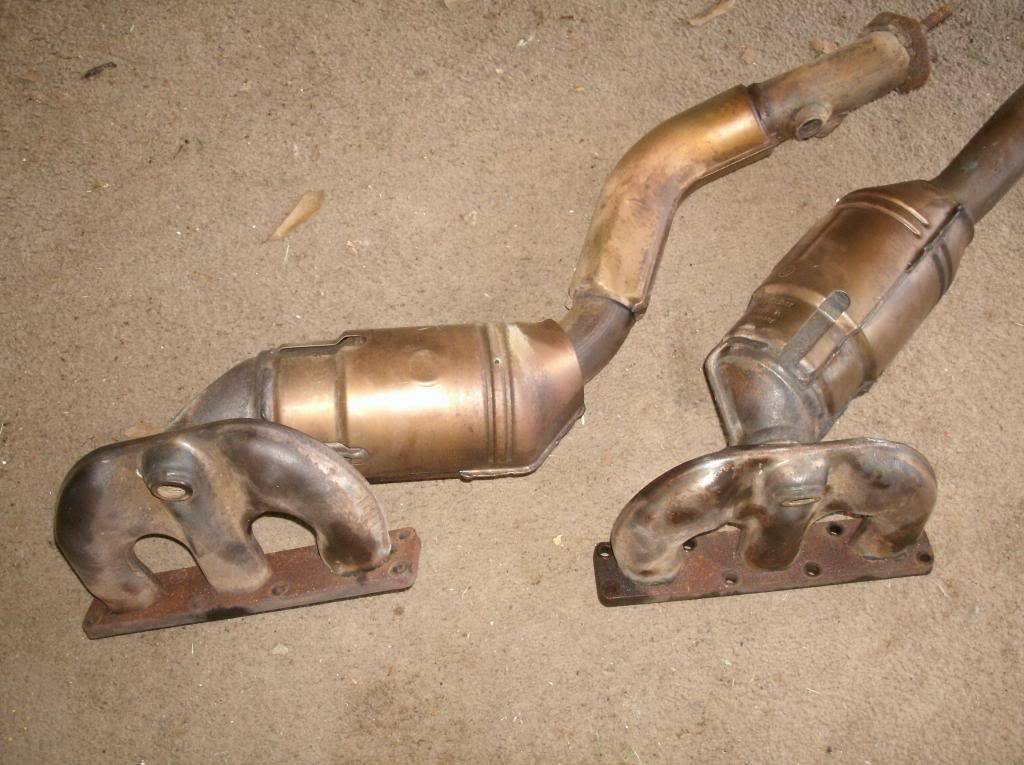

Their stainless steel framework keeps the insides smooth, thus aiding the easy flow and ultimately, quicker release of exhaust gases. All tubes are equal in length and channelize gases from each cylinder separately to a collector pipe, which helps to prevent back pressure.

Headers, as mentioned earlier, comprise four individual tubes that are connected to each of the four cylinders, respectively. Headers do solve the flaws projected by manifolds however, they too have their share of cons. On the other hand, exhaust headers are aftermarket parts comprising individual steel tubes for each cylinder and a collector pipe. This is what makes manifolds sturdy and durable. However, both possess certain differences that affect performance largely.Īn exhaust manifold is in most cases, a stock part drafted out of solid cast-iron. Difference between Exhaust Manifolds and Headersīoth exhaust manifolds and headers carry out the same function―channelizing residual gases from cylinder heads to a vehicle’s exhaust system. Now, let’s do an exhaust manifold vs exhaust header comparison, and analyze the functions of each. This is how the exhaust system of an engine functions. The gases are then directed to the muffler, and released through the tailpipe. Once the harmful gases have been taken care of, the filtered exhaust gases travel through the resonator a resonator performs the job of reducing the noise produced by the engine. The gases are collected in a common pipe connected to the manifold or header and are further directed to the catalytic converter, which is designed to reduce or neutralize harmful, polluting gases. The resulting gases are channelized into the vehicle’s exhaust through either the manifold or the header. In the last stroke, the engine rids residual gases generated due to the combustion of fuel via an outlet valve designed to channel them to the vehicle’s exhaust system.Įach cylinder head is connected to a separate pipe, protruding from the exhaust manifold or header. Each stroke performs a function, the first one is for intake, the next is for compression, then combustion, and the last one is for exhaust. A four-stroke engine uses four strokes to complete one cycle of combustion of fuel. Let’s take the example of a four-cylinder, four-stroke gasoline engine to make things easier. Check it out! Working of an Engine’s Exhaust System To understand manifolds and headers, it’s essential to understand briefly, the functioning of an engine’s exhaust system.įurther explained is a manifold/header’s role in the exhaust process, and a detailed comparison between the two. Most exhaust systems consist of a manifold or header, a catalytic converter, a silencing central section, a muffler, and a tailpipe.Įach of these parts is either meant to reduce the discharge of harmful pollutants, or to reduce the noise generated by the engine. One supplies fuel to it, and the other channels the smoke from the burnt fuel to the vehicle’s exhaust system. Copper GasketsĬopper gaskets are used in manifolds as well as headers to make them airtight and avoid exhaust noise and gas leakage.Īny and every car engine has majorly two types of valves. exhaust header comparison to understand the differences between these major components of a vehicle’s exhaust system. This WheelZine post undertakes an exhaust manifold vs.

Although exhaust manifolds and headers seem to perform similar functions, they have substantial differences between them.


 0 kommentar(er)
0 kommentar(er)
